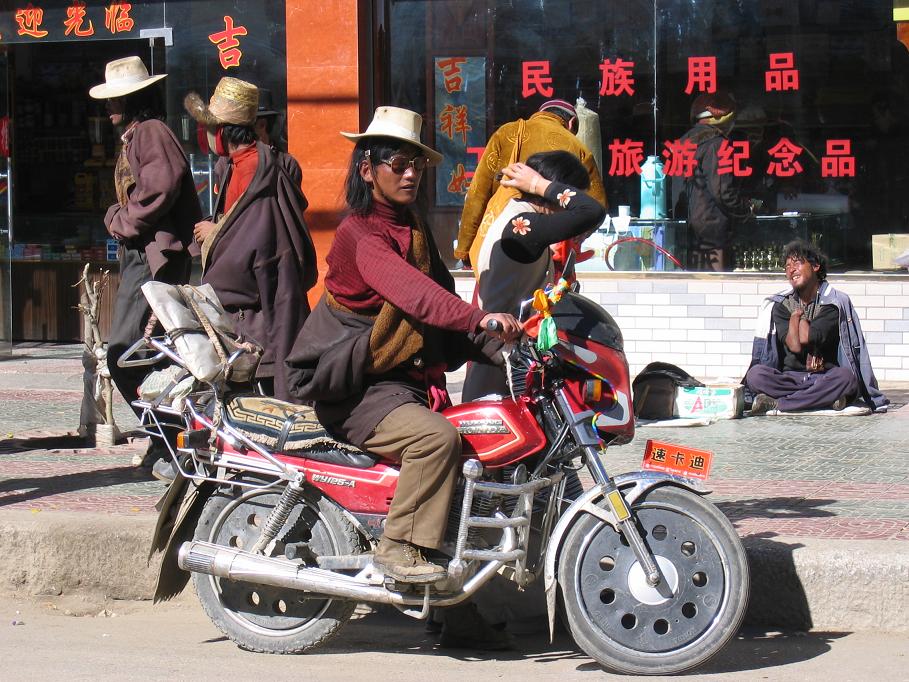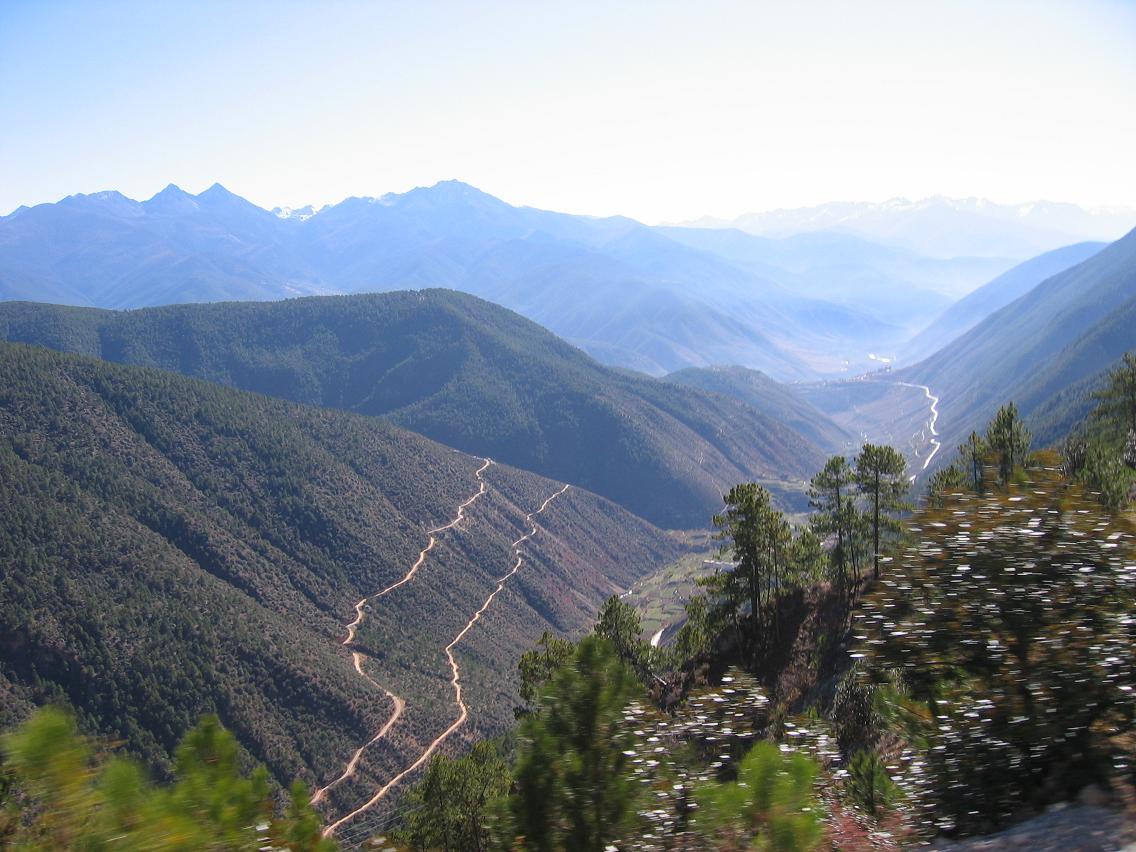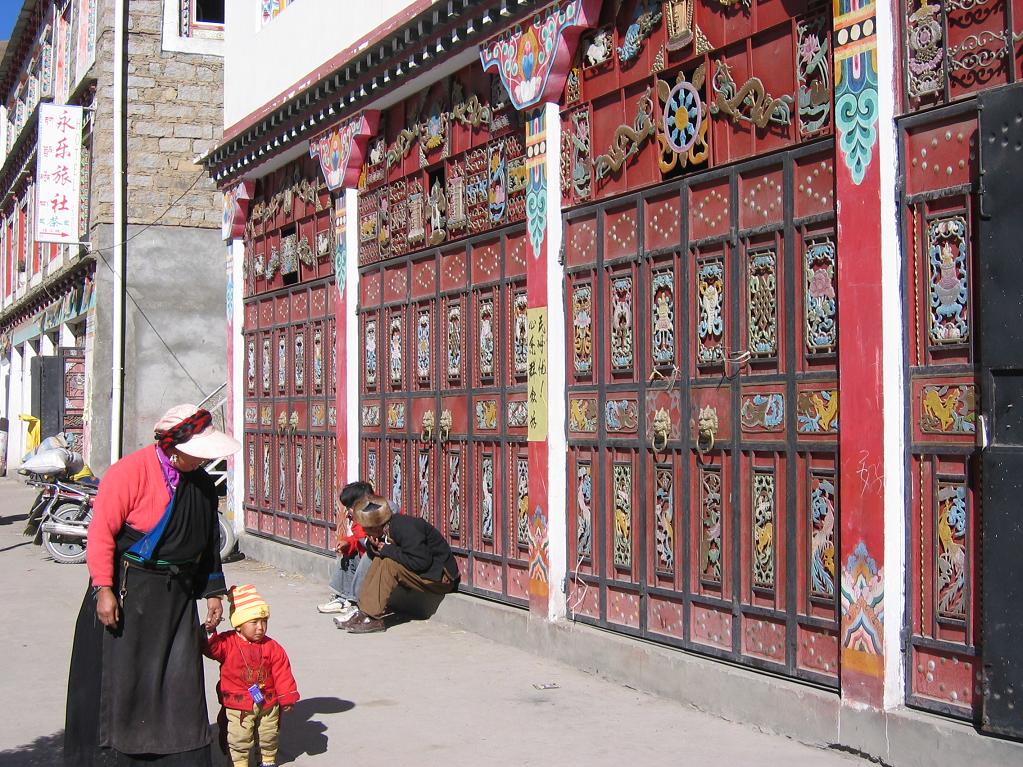Ganzi - A week in the Tibetan Autonomous Prefecture
 The Ganzi Tibetan Autonomous Prefecture is situated in western Sichuan province. More Tibetans live outside of Tibet than inside it, 800,000 in Ganzi alone. It is a gorgeous region to travel through - the bus curls its way around immense mountains from one snowy peak to the next, grinding its way up to 4870 metres and passing by Kangding's Gongga Shan, which at 7556m is the 11th tallest mountain in the world. As we negotiated each precarious mountain pass, I breathed a sigh of relief and gazed out at the large rock piles, Tibetan holy sites whose most striking feature is the brightly coloured flags that strangely resemble the streamers at used car yards.
The Ganzi Tibetan Autonomous Prefecture is situated in western Sichuan province. More Tibetans live outside of Tibet than inside it, 800,000 in Ganzi alone. It is a gorgeous region to travel through - the bus curls its way around immense mountains from one snowy peak to the next, grinding its way up to 4870 metres and passing by Kangding's Gongga Shan, which at 7556m is the 11th tallest mountain in the world. As we negotiated each precarious mountain pass, I breathed a sigh of relief and gazed out at the large rock piles, Tibetan holy sites whose most striking feature is the brightly coloured flags that strangely resemble the streamers at used car yards.
People in Ganzi make their livelihood by herding yaks, sheep and goats on the mountain plateau grasslands. Increasingly, tourism is a source of income for those enterprising enough to take advantage of the growing trickle of foreigners making its way into the region. We were greeted at each bus terminal by women advertising rooms in their houses - it's a practice not authorised by the Chinese government, but seems to go on nonetheless. In Tagong we stayed at a beautiful Tibetan house owned by two generous and entertaining locals. We sat for a few hours after dinner giving each other language lessons. The words provide a strange road map to our conversation, which covered family, food and altitude sickness - for our hosts, pronunciation of 'student' was near impossible, 'yoghurt' less difficult, while 'vomit' seemed to come out naturally. In Tagong as in other stops in Ganzi,  many shop fronts were tall doors of deep red, decorated in a range of motifs. If you stopped by one for a meal, you would more than likely be served one of two things: Tibetan soup, a type of vegetable soup with thick, doughy noodles; or yak meat. In Kangding, the restaurant owner helped us decipher the Chinese menu by making horn signs with her index fingers. Minutes later we were presented with a plate piled high with hunks of yak meat, along with individual knives and chopping boards to help us devour this surprisingly tasty animal. Customarily, all of this is washed down with yak butter tea, a heavy, milky drink that leaves the impression that you've just swallowed half a tub of Meadow Lea.
many shop fronts were tall doors of deep red, decorated in a range of motifs. If you stopped by one for a meal, you would more than likely be served one of two things: Tibetan soup, a type of vegetable soup with thick, doughy noodles; or yak meat. In Kangding, the restaurant owner helped us decipher the Chinese menu by making horn signs with her index fingers. Minutes later we were presented with a plate piled high with hunks of yak meat, along with individual knives and chopping boards to help us devour this surprisingly tasty animal. Customarily, all of this is washed down with yak butter tea, a heavy, milky drink that leaves the impression that you've just swallowed half a tub of Meadow Lea.
Without the language, we found it difficult to gain any great insight into the politics of being a Tibetan living in an autonomous prefecture in China. However, our host in Tagong did communicate to us the frustration of competing in a tourist market which the Chinese are seeking to infiltrate. She was visibly upset that her Chinese competitor up the road built her guesthouse with a Tibetan exterior, offered Tibetan food and ran tours of the region, all the while charging far more than was reasonable. This allegation of Chinese people exploiting the growing tourist interest in Tibetan culture reminded me of another type of Chinese infiltration into Tibet - the Beijing-Lhasa railway. The building of this railway is widely seen as an attempt by the Chinese government to encourage Chinese immigration into the region and further weaken Tibetan culture. Just a couple of weeks ago it underwent its first test run, and is expected to be open to the public in late 2006.
 As we arrived in Xianggelila (formerly known as Zhongdian), the end of our sojourn into Ganzi, we were exhausted. The week offered up a range of experiences that were either interesting cultural insights or whinge-worthy irritations, depending on our mood at the time: sitting on buses with the crisp -7C air blowing through open windows, numbing faces and toes for hours at a time; encountering novel toilet designs that deliver your waste back to you; opium-addled men spitting out bus windows, misdirecting, and hitting us instead; waiting four hours for a bus at the Chinese equivalent of Royston Vasey and then never being entirely sure that we were heading in the right direction; sleeping in freezing rooms whose electric blankets tended to lose their utility in the hours-long blackouts. So it was with great relief that we arrived in Xianggelila and found the following: running water (after midday when the pipes unfreeze), cafes serving eggs on toast and decent coffee, and a DVD room in our hostel. Tonight will be our third night here. We haven't had break in several months of travelling, and we think we deserve a little time in a home-away-from-home.
As we arrived in Xianggelila (formerly known as Zhongdian), the end of our sojourn into Ganzi, we were exhausted. The week offered up a range of experiences that were either interesting cultural insights or whinge-worthy irritations, depending on our mood at the time: sitting on buses with the crisp -7C air blowing through open windows, numbing faces and toes for hours at a time; encountering novel toilet designs that deliver your waste back to you; opium-addled men spitting out bus windows, misdirecting, and hitting us instead; waiting four hours for a bus at the Chinese equivalent of Royston Vasey and then never being entirely sure that we were heading in the right direction; sleeping in freezing rooms whose electric blankets tended to lose their utility in the hours-long blackouts. So it was with great relief that we arrived in Xianggelila and found the following: running water (after midday when the pipes unfreeze), cafes serving eggs on toast and decent coffee, and a DVD room in our hostel. Tonight will be our third night here. We haven't had break in several months of travelling, and we think we deserve a little time in a home-away-from-home.
Photos of giant pandas, Chengdu Peoples' Park, Tibetan cowboys and more...
[Note: The Chinese government blocks access to a huge range of websites, including BBC News and this blog. As a result I am kind of posting blind! So please let me know if my blog entries feature upside-down photos or, more likely, lengthy reports on how well the Chinese government is doing in combating bird flu.]

1 Comments:
Though i able toread it but could not get the info am looking for.:) wana learn how to go there and what to expect in return..cheers
Post a Comment
<< Home